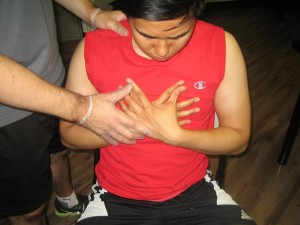The pain in the chest can oftentimes be referred from the back. The pain is usually felt in the chest but the exact cause of the problem might involve the thoracic spine. If the individual experiences chest pain, it might not be a cardiac issue involving the heart but a referred pain originating from another part of the body. It is best to consult a doctor so that proper assessment can be carried out in order to pinpoint the exact cause of the pain.
Symptoms of referred chest pain
The symptoms of referred chest pain typically include pain in the chest that occurs without any form of traumatic injury to the chest area. The pain can be aggravated when the individual take deep breaths, sneezes or coughs. It is vital to bear in mind that in most cases, the upper back of the individual can become stiff while the upper back muscles will feel tight and tender.

Overview on referred chest pain
The pain that occurs in the chest or rib area can oftentimes be referred from the thoracic spine. It is important to note that this area of the spine runs amidst the shoulder blades and down to the middle back. This is considered as the common cause of chest pain among young athletes.
When it comes to referred chest pain, it occurs when pain is felt in one region but does not start there. Instead, it is caused by a problem in another part of the body. Referred pain typically begins at an area that is positioned higher than location of pain that is experienced = by the individual. In case of referred chest pain, it can start in various parts of the body and typically occurs in the facet joints of the thoracic spine. In some circumstances, it also originates from the costovertebral joints where the ribs connect to the vertebrae. Muscle tightness and certain trigger points can also develop, intensifying the referred pain experienced by the individual.
Treatment of referred chest pain
The treatment of referred chest pain usually depends on the exact cause of the pain but the commonly utilized treatments include deep tissue massage which helps relieve the tension in the muscles which will minimize the pressure on any nerves that are instigating the chest pain. To learn to recognize and manage this condition, enroll in a first aid class today.
In some cases, spinal manipulation is performed in order to restore full range of motion to the joints in the spine. Strengthening and stretching exercises must also be part of the exercise routine of the individual. These exercises are recommended for the upper body, core and upper back so that the individual will regain full strength and movement over time.
